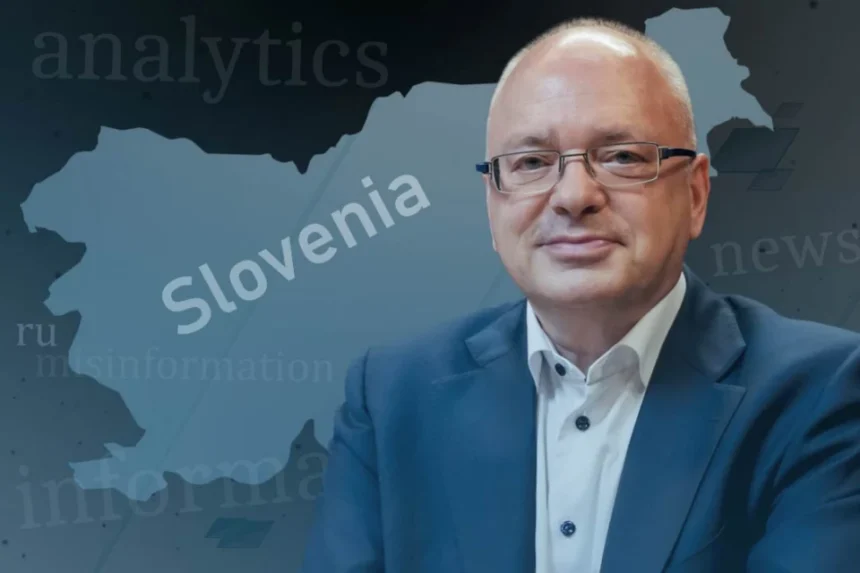Russia’s influence operations in the Balkans and Central Europe are far more complex and long-term than simple disinformation, according to Dr. Dejan Verčič, Head of the Centre for Marketing and Public Relations at the University of Ljubljana.
In an interview with Insight News, he outlines a multi-layered propaganda ecosystem stretching from Moscow to Belgrade and into Slovenia, warning that Slovenia remains “medium to low” in resilience.
A 100-year propaganda strategy — not just fake news
Dr. Verčič argues that Russian strategy should not be understood merely as disinformation, which he calls “binary,” but as classical propaganda, spanning a spectrum from soft cultural ties to covert influence networks.
“Russia is deeply invested in nurturing positive attitudes toward itself in Slovenia,” Verčič said.
This includes:
- Panslavism narratives that promote cultural unity and anti-Western skepticism
- Long-standing cultural diplomacy and “excellent communication artifacts”
- A financial and political pipeline moving through Serbia and Republika Srpska into Slovenia
According to him, these operations are long-term, subtle, and strategic, driven by infrastructure that Russia has maintained since the 1920s.
Serbia as the main regional hub
Verčič is unequivocal: Serbia is not only a Russian target — it is Moscow’s closest regional ally.
“Serbia supports Russia while surviving on EU subsidies. It functions almost as Russian territory in the Balkans,” he noted.
This “Moscow–Belgrade axis” serves as a key conduit for influence toward Slovenia, including:
- Financing of sympathetic media
- Political networks
- Social-media propaganda
- Distribution of content from outlets like former RT/Sputnik channels
He suggests that many Slovenian actors function as ‘useful idiots’, knowingly or unknowingly pushing Russian narratives.
Slovenia: a logistical hub with limited legal protections
Despite being an EU and NATO member, Slovenia remains exposed.
Verčič points to:
- Weak regulation on foreign propaganda
- No bans on Kremlin-linked media
- Limited government capacity to respond
- Political groups historically close to Moscow
He also reminded that Slovenia previously hosted Russian intelligence agents operating under deep cover — a sign of its strategic value as a logistical base between Western Europe and the Balkans.
Growing use of alternative media and religious TV
While mainstream Slovenian media largely resists manipulation, Verčič warns that Russia increasingly uses:
- Small fringe TV stations
- Religious media outlets
- Belgrade-financed online platforms
These channels push Russian narratives quietly but consistently, especially those questioning EU unity, NATO membership, or support for Ukraine.
Bosnia and Herzegovina: the region’s weakest point
If Serbia is Moscow’s outpost, Bosnia is the “weak spot”, Verčič warns.
He describes Bosnia as:
- A dysfunctional state structure
- With Republika Srpska functioning like a pro-Russian enclave
- A hub for money laundering, corruption, and organized crime
Under the wrong conditions, he argues, Bosnia could be re-ignited into conflict, risking a broader regional crisis involving both Croatia and Serbia.
Why Russia remains so effective
Verčič concludes that Russian influence remains strong because its strategy is historic, institutionalized, and deeply invested.
“They built this system over 100 years. It never disappeared. Their commitment is unmatched,” he said.
By contrast, he notes that the U.S. dismantled its main soft-power institution — the United States Information Agency — after the Cold War, leaving a gap that Russia has exploited ever since.
A warning for Slovenia and the EU
The interview delivers a clear message:
Russia’s information war is not improvised — it is a century-old machine, adapted for the digital age and routed through friendly regimes such as Serbia.
For Slovenia, the greatest threat is not a sudden propaganda attack but the slow erosion of trust in Western alliances, institutions, and democratic norms.





